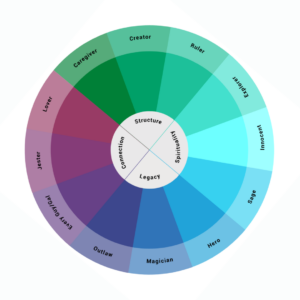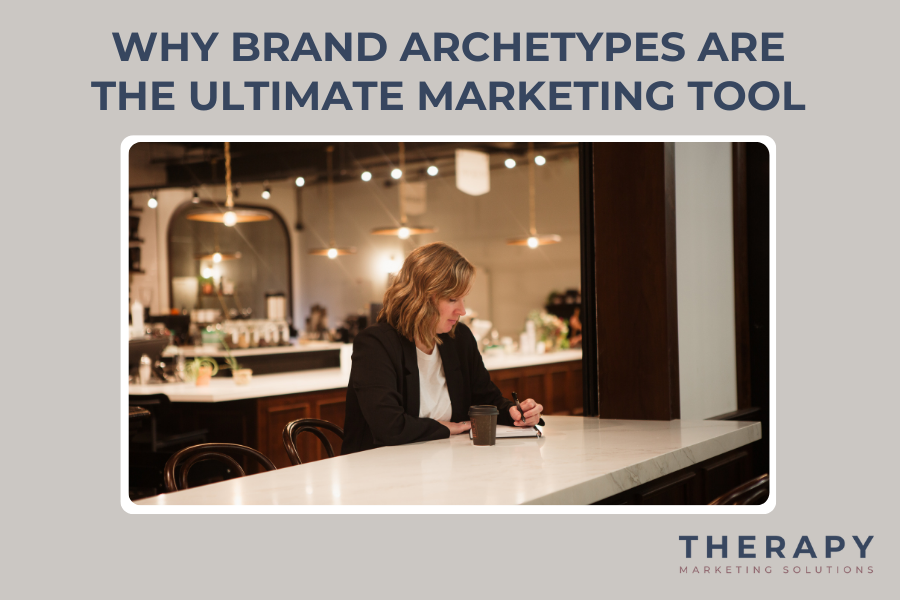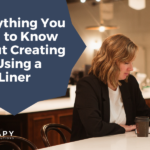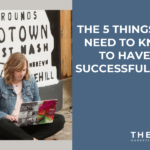If you’ve visited our blog before, you know that we don’t shy away from scary topics. Starting a business– especially one in the allied health industry, isn’t exactly a walk in the park. From legal and financial struggles, to logistical challenges and everything in between, you’ve got your hands full. While we’ve provided plenty of resources to help you navigate those complexities, today we are so excited to leave behind the daunting parts of starting a business and get into one of our absolute favorite steps of business creation: Brand Archetypes. If you’ve never heard of brand archetypes, don’t worry! We are going to provide insights for the novice and expert alike.
Brand archetypes are essentially personality profiles for your brand. Your brand archetype dictates everything in your marketing– Especially the voice and tone you use when engaging with both prospective and current customers. They define the traits and values your brand embodies, allowing customers to relate to it as if it were a person. As Julie Stroud of Bright Brand says, “Personified brands humanize buying and selling. Customers see the brand as an extension of themselves and a way to live their aspirations.” No matter the size of your company, these archetypes humanize the buying and selling process, tapping into universal emotions and desires.
The Selection Method
When selecting your archetype, you’ll decide on a dominant and influencing archetype, which makes up your overall archetype. That’s right, you don’t get to just choose one fun personality for your company, you get to choose two! Just like a person, your brand isn’t defined by one simple characteristic. The dominant archetype reflects what your customers expect from your brand and how you want them to perceive it. Meanwhile, the influencing archetype guides how you address customer needs, interact with them, and shape your brand’s voice.

Let’s explore the 12 brand archetypes as well as some of the companies who personify them:
The Innocent: Represents purity, optimism, and trust. Brands like Dove embody this archetype, offering products that evoke feelings of safety and simplicity.
The Hero: Symbolizes courage, resilience, and determination. Think of brands like Red Bull, inspiring consumers to push their limits and strive for greatness.
The Explorer: Stands for adventure, curiosity, and freedom. Companies like Jeep appeal to the explorer archetype, encouraging customers to embrace new experiences and discover the unknown.
The Sage: Epitomizes wisdom, knowledge, and introspection. Brands like Google position themselves as the ultimate source of information, empowering users to learn and grow.
The Magician: Represents transformation, imagination, and empowerment. Apple embodies the magician archetype, offering products that promise to change lives and unleash creativity.
The Outlaw: Symbolizes rebellion, freedom, and nonconformity. Harley-Davidson appeals to the outlaw archetype, embodying a sense of rebellion and individuality.
The Lover: Stands for passion, intimacy, and connection. Victoria’s Secret taps into the lover archetype, offering products that evoke feelings of desire and romance.
The Jester: Epitomizes joy, humor, and spontaneity. Brands like Coca-Cola embrace the jester archetype, using humor to connect with consumers and bring moments of joy.
The Caregiver: Represents compassion, nurturing, and support. Johnson & Johnson embodies the caregiver archetype, offering products that prioritize the well-being of families and communities.
The Ruler: Symbolizes authority, control, and stability. Brands like Rolex appeal to the ruler archetype, representing luxury and exclusivity.
The Creator: Stands for innovation, originality, and self-expression. LEGO embodies the creator archetype, inspiring imagination and endless possibilities.
The Everyman: Epitomizes relatability, inclusivity, and authenticity. Brands like IKEA appeal to the everyman archetype, offering affordable products for the masses.
The effectiveness of archetypes has a lot to do with their deep-seated presence in human behavior. As you delve into the intricacies of archetypes, you’ll notice familiar patterns emerging – perhaps in the form of your goofy uncle at family gatherings or your friend who challenges societal norms with their unconventional ideas. These archetypal personas, whether consciously recognized or not, seem to resonate with us on a fundamental level, almost as if they’re hardwired into our brains. Leveraging these archetypes in branding becomes a strategic advantage, offering brands a shortcut to establishing meaningful connections with their audience. Having a solid brand makes you memorable. So, while we told you earlier about how much we absolutely love brand archetypes, it’s less about hype and more about understanding the science behind human behavior, providing a solid foundation for brands seeking to build lasting relationships with their customers.
So, What Next?
Once you’ve identified your brand’s archetypes, the fun really begins. These archetypes are only the beginning as they can help you align your internal culture, marketing strategies, and customer interactions. Whether it’s infusing your brand voice with humor or crafting marketing campaigns that resonate with your audience’s deepest desires, the possibilities are endless. Here are a few examples that we think are clever. Zappos boasts the Jester archetype, and to uphold that personality, instead of playing jazzy music while their customers are on hold, they tell endless Dad Jokes. Their personality is bold, and it’s captivating. They make you want to buy their shoes simply because they are likable. Julie Stroud points out a couple of hypothetical ways to leverage the brand archetypes in marketing. If a company has chosen the Everyman archetype, then they should consider building up a large community and connecting with them in meaningful ways. If another business is the Ruler, then at some point, they should consider increasing their prices or creating a pricing model that reflects this archetype.
Harness the power of your brand archetypes to foster cohesion within your company, engage your audience on a deeper level, and unleash the full potential of your brand. After all, in a world brimming with competition, it’s the brands that dare to be authentic, relatable, and unforgettable that truly stand out. Remember this: brand archetypes aren’t just about crafting a logo or tagline – they’re about creating a legacy, a movement, a story that captivates hearts and inspires action. Embrace the magic of brand archetyping, and watch as your brand transforms from a mere business into an unforgettable experience that leaves a lasting impression on all who encounter it. Our next blog post will dive deep into 6 of the 12 brand archetypes so that you can become an expert on the topic and be certain of your brand’s archetype.





